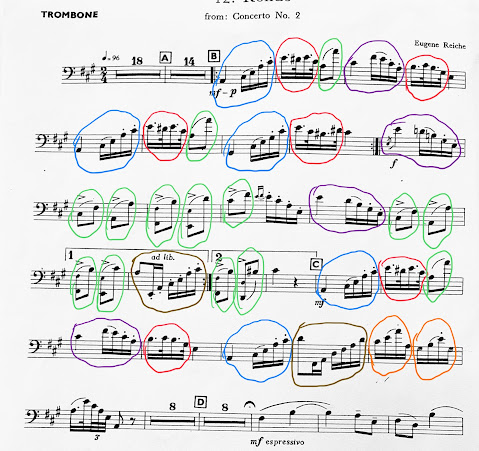Phrases and Motives
Lesson 22
October 6th, 2021
Lesson 22
Lecture notes:
- A phrase is a musical thought or idea that ends with a cadence. They are usually two, four, or eight measures in length. Phrases can be compared to sentences that have punctuation marks to help show a complete thought or idea.
- A motive is the smallest recognizable idea in music. Musical segments have to be repeated exactly or be in a varied form to qualify as a motive.
- Motives usually appear in five common variations: transposed, inverted, extended, truncated, and fragmented.
- Transposed motives reoccur, but they appear on another scale degree from the one that proceeded it.
- Inverted motives move in the opposite direction of their diatonic counterpart note.
- Extended motives repeat portions of the motive to make it longer.
- Truncated motives cut off portions of the end and become shorter.
- Fragmented motives are small recognizable pieces of an original motive that are repeated in a variation or transposition.
- Phrases that come in pairs are called periods. This concept involves the use of two phrases put together, with the first phrase usually ending with a harmonically weaker half cadence (HC) or imperfect authentic cadence (IAC) and the second phrase usually ending with the stronger perfect authentic cadence (PAC).
- The first phrase in a period is called an antecedent, and the second phrase would be called the consequent. So you can think of this as a question and answer.
- When there is a single phrase in music, this would be called a sentence. This type of phrase has a weak internal cadence.
- When phrases have the same number of bars in a period, they are symmetrical. When phrases have different lengths, they are called asymmetrical. For example, two phrases that have four bars each would be symmetrical. However, two phrases with the first phrase having four bars and the second with six bars would be asymmetrical.
The photo above shows two phrases that create a period. For example, you can see where the first phrase, which is an antecedent or question when compared to sentences, ends with a half cadence (HC). Additionally, you can see where the second phrase is a consequent phrase that would be an answer when compared to a sentence. This phrase ends on a perfect absolute cadence (PAC). The motive that was used in this photo was a transposing motive. (Photo Credit: EarMaster, https://www.earmaster.com/music-theory-online/ch02/chapter-2-3.html)
The photo above shows the extended motif. You can also see that the first sub-phrase ends on an imperfect authentic cadence (IAC), and the second sub-phrase ends on the perfect authentic cadence (PAC). (Photo Credit: Phillip Magnuson, https://academic.udayton.edu/PhillipMagnuson/soundpatterns/diatonicII/phrase.html)
The video above explains motives and phrases and how they are constructed from a simple idea. The presenter explains how simple ideas form complete phrases and even develop into a question-and-answer analogy. The question phrase is the antecedent, and the consequent phrase is the answer. That would be called a period. The short musical excerpts used to illustrate his lesson were Beethoven's Symphony # 9 Mvmt. IV, "Ode To Joy" and Mozart's Symphony # 40, Mvmt. 1. (Video Credit: Jesse Strickland, https://www.youtube.com/watch?v=50fOnEkIcOY)
The video above explains what a melody, motive, and phrase are. He illustrates these by playing different songs on the piano and showing how the ideas of the motives were used to create phrases and, ultimately, entire symphonies. The three main songs that were used in the video were "Ode to Joy" by Beethoven, the lullaby "Twinkle Twinkle Little Star," and "Amazing Grace." He played short excerpts of these three songs in the video lesson. (Video Credit: Wayseeker2000, https://www.youtube.com/watch?v=XbbWAnzd0d0)
The photo above is a piece named Rondo from Concerto No. 2. You can see where I circled the motives scattered throughout the piece, mainly transposing motives. I will be playing up to the bar before the eight-measure rest before rehearsal letter D.
The video above is me playing the piece Rondo from the photo above.





Comments
Post a Comment